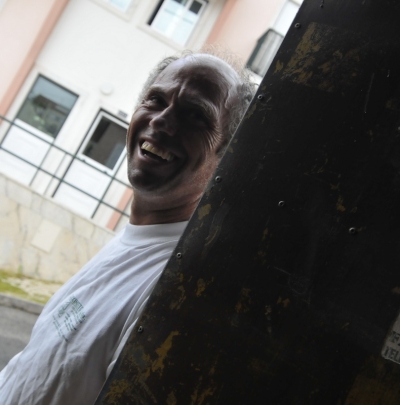Know more:
Óscar Cardoso
(N. 9 May, 1960)Óscar Manuel Barbedo Cardoso was born in 1960 and has been working in string instrument’s restoring and manufacturing for 35 years. He began making instruments in 1990. He is a “Guitarreiro” (luthier). He learned his craft with his father, the luthier Manuel Cardoso, whose workshop at Casal do Privilégio, in Odivelas, he still runs today. He was approximately 8 years old when he started to look for the toys he wanted to play with at his father’s workshop: tools.
Óscar Cardoso started by performing small tasks – the ones that required less precision, more strength, and less experience and specific know-how, as woodcutting works. But, just as his father, he lived in a permanent state of restlessness. Just like his father, he believed nothing was useless, and that every technique, every experiment, every material, every trial and every error were determinant to learning and to improving his practice. From a young age this luthier “had crazy plans in his mind!” and his father would laugh at his delirious projects. “But it was this craziness that taught me”. The master’s point of view shifted before his son’s obvious skills. Confirming Óscar’s creative ability and that he was really gifted to invent instruments and imagine uncommon manufacturing processes, use new materials, and always achieving outstanding results, Manuel Cardoso from then on supported all his experiments.
For many years Óscar Cardoso just sawed, trimmed, and repaired tools. He then moved to repairing and manufacturing all sorts of musical instruments, from violins to Portuguese guitars and lutes. He spent many years doing these repairing works. And only when his gestures achieved the required consistency he was allowed to manufacture guitars, an easier instrument to make whose manufacturing technique is less complex and demanding than the one required to make Portuguese guitars. When his hands were ready for both materials and processes he began making guitars, but just their bodies because the necks were still made by his father. The last step of his learning process began when Óscar went on to assembling the necks.
To reinforce his professional training and respond to a “desire to see the world”, in 1986 he was awarded a scholarship from Secretaria de Estado da Cultura to study at the Scuola Internationale de Liuteria de Cremona. Without even being aware of it he was walking the same path his father’s master had walked 60 years before him. In that celebrated school, renown for the mythic violin manufacturers from that famous Italian town, he learned “plenty of theory”, but in fact… “he learned nothing”. He found out that the method he was using, Álvaro da Silveira’s tradition, was indeed the Italian tradition. He found out that what he already knew by experience and that he had learned from his father was indeed what the school was teaching. He learned that there were names for the works he was doing on a daily basis all his life: he learned theory on varnishes, on woods, he learned botany, he learned physics of materials (“endurance to torsion, wood elasticity”, for example); all things his father had taught him and that Óscar himself had interiorized through his daily work at the workshop and due to his outstanding ability to listen to the world. Although redundant, this experience gave Óscar the necessary confidence to pursue his art and to innovate thanks to his boldness. His current practice is based upon his father’s teachings. He knows there is a reason that was conceptualized by someone else, but he seldom uses it.
Three years later his father’s health was getting worse, he felt that the course was redundant and decided to return to Portugal to be responsible for the workshop’s production and allow his father to reduce his activity.
His “experiments” are just that sometimes; but they all became innovations applied to his musical instruments and helped us understand this luthier and realize why they are part of his personality. The most radical and most stabilized of them all derive from a process that begun in 1995 with the first backless instruments. These instruments gave the manufacturer a whole new vision and triggered a new approach to chordophone manufacturing and a new understanding of musical instruments’ acoustic functioning that affected Óscar Cardoso’s work from then on – even as far as “more conventional” instruments are concerned.
When confronted with the instrument’s unexpected look his customers – after overcoming the initial conservativeness before the novelty – eventually use them. According to Óscar Cardoso, currently “half of his customers play backless guitars, in both concerts and recordings”.
It is important to point out that the acoustic specificity of Óscar Cardoso’s instruments does not derive solely from their back opening, but mainly from an astonishing range of different manufacturing solutions and their co-relation, from the manufacturing processes to the structural details and manufacturing finishing that create the unique sound his instruments produce.
Independently from the innovation level of any of his instruments, his guitar’s profiles – conventional models or non-conventional ones - are different from the ones manufactured by other luthiers: both the back and the soundboard are rather arched. The heel block is totally curved, “that part of the heel block looks like a boat’s keel”, and creates a more fluid relationship between the neck and the body. This arched feature shows the tension of the soundboard, and this tension is essential for sound producing (the more tension the strings produce over the materials the faster those materials will vibrate – particularly on the soundboard – and the better the guitar will work). On the other hand, the look of a guitar is also a way of displaying his art. His guitars are very similar to the ones made by Álvaro da Silveira – he uses the same moulds – but the way they are made highlights their curved lines.
Nowadays his Portuguese guitars and his guitars are played by José Manuel Neto, Carlos Manuel Proença, Custódio Castelo, Mário Pacheco, Filipe Lucas, Edgar Nogueira, João Alvarez, Pedro Joía, José Peixoto, Arménio de Melo, Ângelo Ferreira, Diogo Clemente, Jaime Santos Júnior, César Silva, Bernardo Couto, and a wide and ever growing list of other artists.
Source:
Excerpt from Pedro Félix's text from the exhibition catalog “ Óscar Cardoso – Guitarreiro”, Museu do Fado, 2011)
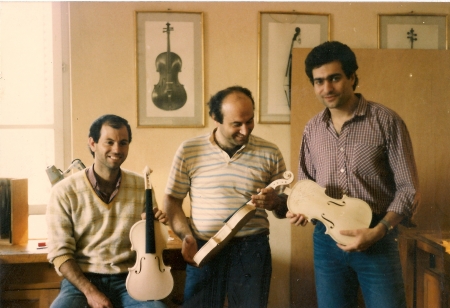
Óscar Cardoso, Escola Internacional de Liuteria Antonio Stradivari, Cremona,1987
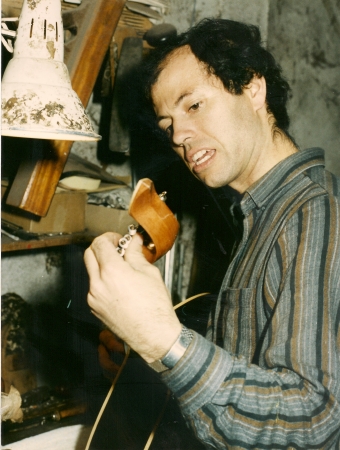
Óscar Cardoso, 1991
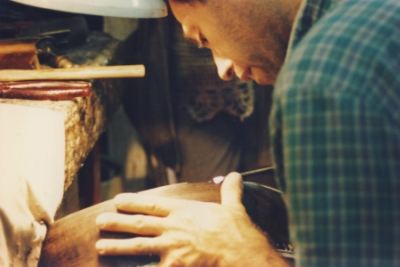
Óscar Cardoso, sem data
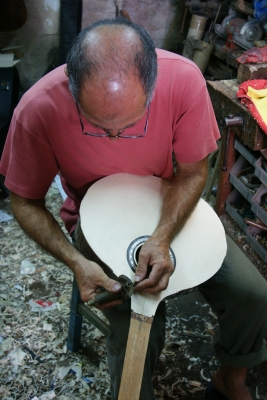
Óscar Cardoso, sem data
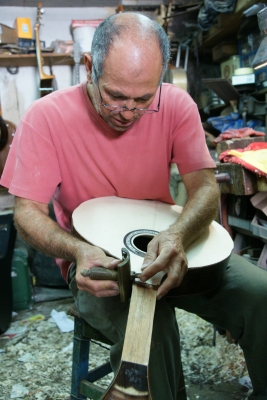
Óscar Cardoso, sem data
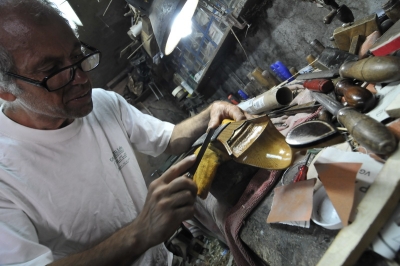
Óscar Cardoso, foto de Luis Carvalhal, 2011
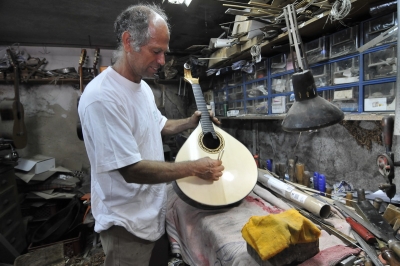
Óscar Cardoso, foto de Luis Carvalhal, 2011
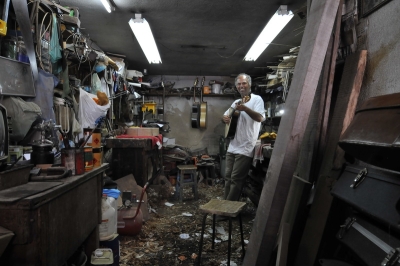
Óscar Cardoso, foto de Luis Carvalhal, 2011
